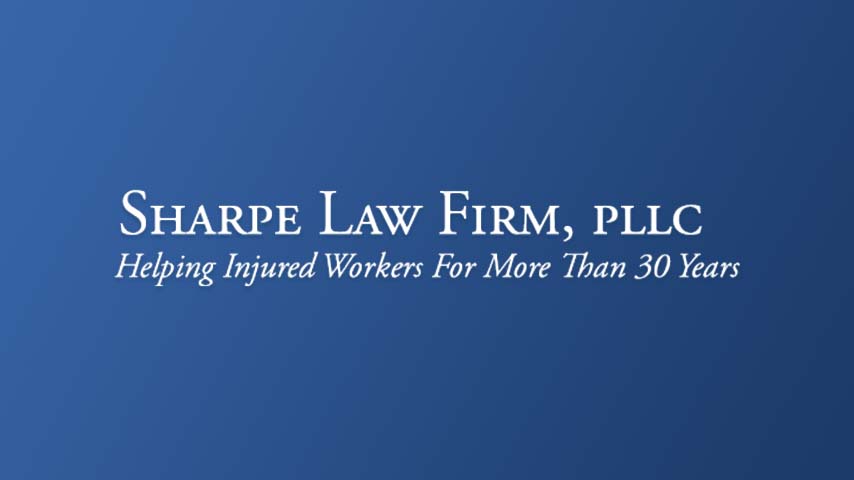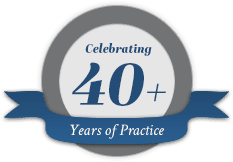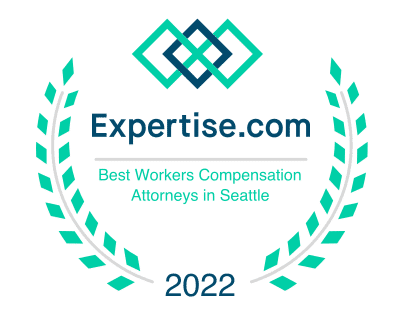What is an L&I Settlement?
An L&I settlement is money paid at claim closure for a work related job injury. There are three different types of L&I Settlements.
- Permanent Partial Disability Settlement (PPD) is money payment at claim closure for persons who can return to work. The web-page you are now on is all about this PPD settlement
- Pensions are lifetime monthly payments. If someone can never work again, it is the best possible settlement. It is the equivalent of time loss for the rest of your life.
- Structured Settlement (CRSSA). A CRSSA is a settlement for someone who doesn’t need the benefits of their L&I claim. A CRSSA is a modest settlement and not much else. CRSSA settlements are often not fair.
PPD Meaning Explained. Permanent Partial Disability – the Usual L&I Claim Settlement.
PPD stands for Permanent Partial Disability. The PPD money is for permanent impairment caused by the job injury. To get a settlement you need an open claim which is ready to close, you must be working or found to be employable, your medical care needs to be at maximum medical improvement, and you need an impairment rating.
PPD means you have an impairment that is unlikely to improve. In other words, it is permanent and exists after you’ve recovered from the injury. Recovery is defined as MMI (maximum medical improvement), which is the point in which no additional improvement is expected.
If You Have or If You Will Return to Work then Permanent Partial Disability (PPD) is your best settlement option.
How Much PPD Settlement Money Will I Get?
Calculating PPD Settlement Benefit Amounts – The amount of PPD settlement money varies with the date of injury, the seriousness of the impairment, whether you have any liens or over-payments on your claim. What you do to help yourself is also important.
- Date of injury is important because each year L&I increases the amount of money they will pay for a particular disability. Your date of injury determines which PPD schedule applies to your settlement.
- The seriousness of your injury is measured by an impairment rating also known as a permanent partial disability rating. PPD ratings are made by medical personnel, usually an IME doctor or your own doctor or both. Get a good PPD rating or you will be disappointed with your settlement amount.
- PPD ratings are the opinions of doctors. Opinions vary. It’s smart to have your PPD examiner be someone who is informed about your injuries and who is not biased. Impairment ratings can be performed by most currently licensed physicians. WAC 296.20.2010(1). There is no requirement that a PPD impairment rating doctor be a network provider.
- Most PPD Impairment Ratings are done by IME doctors. IME doctors are biased. IME doctors believe it is their job to minimize your PPD rating. Here is how that happens. You attend an IME and the examiner gives you a bad rating. Your doctor is asked to agree with the IME report and if he does so, just like that you have a big PPD settlement problem.
- Help yourself
- Don’t sit back and wait for L&I to stick it to you. Do what is smart to help yourself. For example, don’t let your doctor unthinkingly agree with an inaccurate IME. Talk to your doctor and help him get it right.
- Make smart choices. You’re doing the right thing now- getting informed. Keep reading. Learn about your rights, and take action to get a fair settlement.
- View the PPD Settlement Video
- Read WA L&I PPD Settlement Rules and Permanent Partial Disability Award Charts
L&I PPD Schedule of Awards
Schedule of PPD Awards – The amount of L&I disability settlement money is determined when looking at the PPD schedule of awards.
- You cannot change the award schedule. It is preset according to impairment rating(s) and your date of injury. These schedules are complex. They can be found at PPD Settlement Rules.
- You can influence the amount of money you get, see Calculating PPD Settlement Benefit Amounts above and PPD Settlement Calculator just below.
PPD Settlement Calculator – The Permanent Partial Disability Rating and Award Charts.
- A Permanent Partial Disability Settlement is calculated as part of the claim closing process.
- Your impairment is rated by a doctor as a percent of amputation value or a category of bodily impairment and then your claim is closed.
- No settlement money until after you have an open claim, get medical care, become employable, get a rating exam and L&I closes the claim. At claim closure L&I proposes an award, a permanent partial disability award.
- The calculations occur when converting the rating exam to settlement dollars, and is done with the L&I PPD Charts
- It is important to know what you might get – but don’t focus on that and don’t be distracted by things you can’t change. Focus on what you are going to do to improve your numbers so that you improve your PPD settlement.
- It is the rating exam impairment numbers that are important.
- It is what your doctor, the attending physician does or does not do to help you. Does he agree with the IME or does he do the exam for you.
- In the end, all of the complexity boils down to the rating exam and the PPD rating charts.
The Settlement Calculator – L&I PPD Charts.
The charts change every year. L&I PPD charts start on July 1st and end on June 30th. To find your chart click on the correct date range for your date of injury. Our charts go back to July 1996. For a previous date of injury, contact us.
- For extremity injuries you find the PPD Disability Award Schedule for your date of injury, note the area of your impairment then multiply your PPD impairment rating percentage times the scheduled amputation value at your level of impairment.
- For bodily system injuries you use the Category Award Charts to find the PPD schedule for your date of injury then take your PPD category rating and match it to the schedule.
List of Charts by Date of Injury
- July 1, 2023 – June 30, 2024
- July 1 2022 – June 30, 2023
- July 1, 2021 – June 30, 2022
- July 1, 2020 – June 30, 2021
- July 1, 2019 – June 30, 2020
- July 1, 2018 – June 30, 2019
- July 1, 2017 – June 30, 2018
- July 1, 2016 – June 30, 2017
- July 1, 2015 – June 30, 2016
- July 1, 2014 – June 30, 2015
- July 1, 2013 – June 30, 2014
- July 1, 2012 – June 30, 2013
- July 1, 2011 – June 30, 2012
- July 1, 2010 – June 30, 2011
- July 1, 2009 – June 30, 2010
- July 1, 2008 – June 30, 2009
- July 1, 2007 – June 30, 2008
- July 1, 2006 – June 30, 2007
- July 1, 2005 – June 30, 2006
- July 1, 2004 – June 30, 2005
- July 1, 2003 – June 30, 2004
- July 1, 2002 – June 30, 2003
- July 1, 2001 – June 30, 2002
- July 1, 2000 – June 30, 2001
- July 1, 1999 – June 30, 2000
- July 1, 1998 – June 30, 1999
- July 1, 1997 – June 30, 1997
- July 1, 1996 – June 30, 1997
What is an Impairment?
Impairment is defined by the guides as “a loss, loss of use, or derangement of any body part, organ system, or organ function.” A medical impairment can develop from an illness or injury. An impairment is considered permanent when it has reached maximal medical improvement (MMI), meaning it is well stabilized and unlikely to change substantially in the next year with or without medical treatment. The term impairment in the Guides refers to permanent impairment. An impairment may lead to functional limitations or the inability to perform activities of daily living. An impairment rating is the written report of your impairment. It is called a PPD rating exam.
PPD Rating Exams – What is an IME?
- IME is short for Independent Medical Examination. In reality it is not independent and it is not medical treatment. It is L&I’s doctors sent out to give you their version of a PPD rating exam.
- Permanent Partial Rating exams are done in anticipation of claim closure. The PPD rating exam determines how much money L&I will have to pay. These exams are opinions, gat a good opinion or you will wish you had. These exams are performed by licensed physicians, usually IME doctors. There are both favorable and unfavorable rating exams. Guess which type of rating exam L&I has planned for you?
- A good rating exam is done by a doctor who actually examines you and listens to what you have to say. A good rating doctor is not afraid to tell L&I what he or she thinks. This can and probably should be your attending physician.
- A bad rating exam is usually done by an IME doctor. These doctors are hired guns who don’t listen, don’t care, and do close their eyes to your problems. Don’t sit back and let an IME doctor ruin your settlement. Get Help. Learn about IME’s .
How Long Does It Take to Get a PPD Settlement?
A permanent partial disability PPD settlement, if any is awarded
- At the end of the claim – after medical care is completed (maximum medical improvement reached) and,
- After you are employable (working or can work) and,
- After you get a PPD disability rating,
- First settlement payment is made at the time L&I issues a closing order.
Is a PPD Settlement a Lump Sum or is it Time Payments?
How Long do Permanent Partial Disability Payments Last?
- Small PPD payments are lump sum. If the settlement money is less than three times the state’s average monthly wage at the date of injury, a check for that amount is sent at claim closure.
- Modest and large PPD payments are both lump sum and time payments. If the settlement money exceeds more than three times the state’s average monthly wage at the date of injury, a down payment of that amount is made. Then the balance of the award is paid in monthly installments equal to the worker’s monthly time-loss compensation (at the time of closure). Payments continue until the entire amount plus interest is paid.
What If I Don’t Like My Settlement Amount?
- Do something about it. To get a different result you must:
- Protest or appeal the order. See: How To Disagree With An L&I Decision
- Keep in mind you did not agree to this settlement. It is actually just an award. You are allowed to disagree with the amount. However if you do nothing and the 60 days pass, you in effect have settled your case for the award.
Can I Cash a PPD Check and Ask for More Settlement Money?
Yes, you can cash a PPD check and ask for more settlement money. You ask for more by appealing or protesting the closing order before the 60 day deadline passes. If you don’t protest or appeal successfully then you don’t get any more money. Period. How To Disagree With An L&I Decision
Is an L&I PPD Award Really a Settlement?
Only in a manner of speaking. The PPD award comes in the form of an order closing your claim. With that closing order comes news of a PPD rating and L&I’s administrative decision of what money, if any, they are going to give you.
You do not have to agree. After you receive that order, you have only 60 days to make a decision and take action.
Here are your choices:
- Do nothing – if you do nothing, you have effectively settled your claim, because after 60 days the award becomes final.
- Do something – Disagree in writing with L&I’s order. This is how your keep the claim open for more or better benefits. See: How To Disagree With An L&I Decision
- Let the claim close and reopen later – This is a possibility, but be careful with this choice. There are rules about reopening you will want to review now, before you opt to go this route. Reopen Your Claim
Everybody Wants to Know how Much Money They will Get for an Injury at Work PPD Settlement.
You can Figure it out yourself if you know:
- Your date of injury
- Your injuries for each affected body part
- Your category or percentage rating for each affected body part and for your mental health. These numbers are the permanent partial disability rating. You cannot be rated until all your medical conditions are at maximum medical improvement.
See also: How to Calculate L&I Settlement Amounts
What is a Fair L&I Settlement?
Who decides what is fair? Does anyone ever get back what they have lost? How do you keep from getting the short end of the stick?
L&I settlements are inherently unfair. They are a compromise. Nobody ever gets back what they have lost – you lose the use and function of a body part – but L&I can only give you settlement money. Usually less than you deserve.
Stand up for your claim rights. Don’t worry about taking advantage of L&I. That’s not going to happen. So long as you are honest with L&I you will not be getting any unfair advantage. As for not getting a bad deal, that depends on your facts, the claim management, what you do to help yourself.
What about you? Do you have a good plan? If not I recommend that you listen to and follow the advice of a workers comp attorney. This is not rocket science. You can get a fair settlement, but don’t sit back and expect it to happen. You have to take the right steps to get a better settlement
How Do I Get a Better PPD Settlement?
There are several ways to do this.
- If you can not work consider a Pension
- View our settlement video again.
- Don’t let IME doctors push you around.
- Reread this page and understand the information presented here.
- Read the WA L&I PPD Settlement Rules page.
- Take a realistic view of the mental health aspects of a serious disability. Said another way, don’t miss out on mental health treatment and benefit if you are depressed. Often times depression is as disabling and worth as much or more than the physical injury.
- Get informed so you can make good decisions.
- If you have questions or don’t understand what I’m saying then Contact us.
What Can I Do to Help Myself?
Understand the L&I claim process. With your claim open, get your medical care, get your time loss paid, be ready to and/or do return to work. At this point you are in position to have your L&I PPD rated and your claim closed.
Understand how the PPD rules work. Look at PPD Settlement Rules.
If you will never work again see Pensions.
For a fair settlement, make sure your physical and mental losses are fairly and accurately assessed and don’t trust IME doctors.
You can help the claims manager make the right decision. You can try to DIY. You can talk to a lawyer.
Can I Reopen After a Settlement?
Yes you can reopen a PPD settlement after final claim closure. Be careful here because you will need to show an objective worsening of your medical condition. For deadlines and other considerations see Reopening your claim
L&I Attorney Chris Sharpe Explains Other L&I Benefits Besides PPD.
There are many other L&I benefits which are not settlements. Here is a list of the most important benefits. L&I Benefits Summary
What is an L&I Pension?
A pension is a different way to close your active L&I case. If you cannot work again, and you can prove it, a pension will pay you time loss for the rest of your life. If you think this would help you, look at our Pension Page.
An L&I pension is the best possible settlement. An L&I pension has nothing to do with your employer. This is not a retirement pension. This is a disability pension. Anyone hurt on the job and unemployable is eligible. The best pension candidates are over age 55, have a singular work history, and a physically demanding job. They also have a helpful doctor, they cannot work again, and they are willing to talk to a lawyer. If this is you contact us.
What is Better L&I PPD or L&I Pension?
At claim closure L&I awards either a pension or a PPD award. It is based on your employability. It depends how your impairments affect your ability to work. If you will or have returned to work then your disability is partial and PPD is your usual settlement. If you will never work again, then your disability is total and an L&I Pension is your best benefit.
DIY PPD Settlements
Can I do it myself? Many people do. Read this page several times. Pay special attention to the PPD rating exam section. Learn about IME’s. Get a good rating exam, get your doctor to help and you may get a fair settlement.
Can a Washington State L&I Lawyer Help Me?
A free phone consultation with an L&I lawyer in our office will answer that question. An L&I attorney can easily assess where you are and what should be done next. Once you get their advice, you can DIY or you can ask them if they will help you. A good workers’ compensation lawyer won’t take your case unless they believe they can improve your settlement. Initial consultations by our law office always are free, ask as many questions as you wish. Figure out if you can DIY or want a lawyer. We can help you plan a smart course of action to get the best possible settlement. L&I Attorney – Chris Sharpe
L&I PPD Settlement Video.
Learn more about L&I PPD Settlements and view our PPD VIDEO














